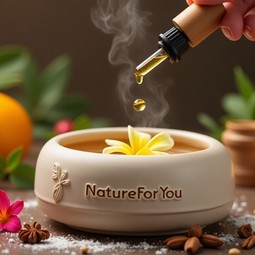

| Volume (ml) | 10 |
Tea Tree essential oil (Melaleuca Alternifolia)
Origin: Avstralia
EC Number: 285-377-1
Description and usage: Made by steam distillation from the Tea Tree leaves. It has a clear or pale yellow color and a typical scent – very fresh and medicinal with herbal undertones. It is known to stimulate the immune system. A massage with a few drops of Tea Tree oil in carrier oil prior to a surgery can strengthen the body and reduce post-operative shock. If you use it in a vaporizer, it can help with colds, measles, sinus inflammation and viral infections. In skin care and hair care products it works great on acne and problematic, oily skin, removes dandruff and helps to remove lice.
What are the most common uses of tea tree oil?
Research into the benefits of tea tree oil is ongoing. Based on what’s currently known about tea tree oil, it’s sometimes used as a natural treatment for certain health conditions, such as:
Tea tree oil is also used in many cosmetic products, such as shampoos, lotions, and soaps. Additionally, it can be included as an ingredient in some household cleaning products.
What are the known side effects of tea tree oil?
The possible side effects of tea tree oil depend on how it’s used. The most popular ways to use the oil are by applying it to the skin (topical application) or by inhaling it (aromatherapy).
Side effects from topical applications
Applying tea tree oil to the skin can cause irritation, particularly if it’s not diluted properly and is used in higher concentrations. Symptoms of skin irritation from tea tree oil can include:
Some people may develop an allergic reaction to tea tree oil. This is called allergic contact dermatitis and can cause a skin rash that may be red, swollen, and itchy. Use of older or improperly stored tea tree oil is often associated with these reactions, but fresh tea tree oil can cause this skin reaction, too.
Blends well with: Cinnamon, clary sage, clove bud, geranium, lavender, lemon, myrrh, nutmeg, rosewood, rosemary, thyme.
Interesting facts: Tea Tree is a tree or a bush with narrow leaves and it can grow up to 7 meters high. It grows well in swampy ground, but now it is cultivated in plantations in many countries. It is a very durable tree - for oil production the wigs are trimmed every two years. Tea Tree oil has been traditionally used by the Australian Aborigines and it has been used in aromatherapy for a long time. It is so appreciated that during World War II the Tea Tree collectors were exempt from the military service, until enough essential oil has been produced. Every soldier and sailor then received the oil as a part of their emergency equipment because it can help with infected wounds and tropical diseases.
Warnings: Read the label carefully and follow the instructions for use. For external use only, not for ingestion. Do not use undiluted. Can cause skin sensitization in some people. Avoid during pregnancy.
Ingredients: Melaleuca Alternifolia